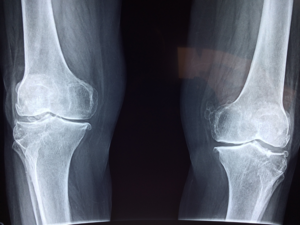World
Discover the Calcium Power of Prickly Pear Fruit for Stronger Bones

Prickly pear, a vibrant cactus fruit, is emerging as a leading source of calcium, offering an alternative to traditional dairy products. According to the U.S. Department of Agriculture, this fruit contains approximately 83 milligrams of calcium per cup, nearly one-third of what is found in a cup of milk. Dietitian Patricia Bannan emphasizes that this colorful fruit can significantly contribute to daily calcium intake, making it a valuable option for those looking to strengthen their bones without relying solely on dairy.
Calcium is essential for maintaining strong bones and teeth, assisting with muscle movement, transmitting nerve signals, and enabling blood clotting. The National Institutes of Health states that roughly 42% of Americans do not meet their daily calcium requirements, prompting the Dietary Guidelines for Americans to label calcium as a nutrient of public health concern.
While dairy products remain the primary source of calcium, fruits can still play an important role, especially for individuals who are lactose intolerant or following a vegan diet. Bannan notes, “Fruits aren’t top sources of calcium compared to dairy, fortified plant milks or leafy greens. But they can still add up throughout the day.”
Adults require approximately 1,000 milligrams of calcium daily, and Bannan suggests that a well-planned plant-based diet can meet these needs. Including fruits like prickly pear, along with other calcium-rich options such as dried figs and papaya, can help bridge the calcium gap for those who avoid dairy.
Boosting Calcium Intake with Delicious Options
Incorporating calcium-rich fruits into one’s diet can be both enjoyable and nutritious. Bannan recommends consuming an 8-ounce glass of calcium-fortified 100% fruit juice, which offers a similar amount of calcium as milk. However, she cautions that fortified juice should complement whole foods rather than serve as a replacement, as whole foods provide additional nutrients and fiber.
The sweet and refreshing flavor of prickly pear has been described as reminiscent of watermelon and strawberries, making it an appealing addition to various dishes. This versatile fruit can be enjoyed raw, juiced, or used in desserts and jellies, making it easy to incorporate into meals.
As consumers become increasingly aware of their dietary choices, fruits like prickly pear may help to diversify calcium sources while promoting overall health. By making small adjustments to their diets, individuals can work toward achieving their calcium goals without relying solely on traditional sources.
In conclusion, exploring options beyond dairy can enhance calcium intake and contribute to stronger bones. With its impressive calcium content and delicious flavor, prickly pear stands out as a fruit worth considering for those looking to improve their bone health.
Note: This article is for informational purposes only and should not be considered a substitute for professional medical advice. Always consult a healthcare provider regarding any medical concerns.
-

 World5 months ago
World5 months agoSBI Announces QIP Floor Price at ₹811.05 Per Share
-

 Lifestyle5 months ago
Lifestyle5 months agoCept Unveils ₹3.1 Crore Urban Mobility Plan for Sustainable Growth
-

 Science4 months ago
Science4 months agoNew Blood Group Discovered in South Indian Woman at Rotary Centre
-

 World5 months ago
World5 months agoTorrential Rains Cause Flash Flooding in New York and New Jersey
-

 Top Stories5 months ago
Top Stories5 months agoKonkani Cultural Organisation to Host Pearl Jubilee in Abu Dhabi
-

 Sports4 months ago
Sports4 months agoBroad Advocates for Bowling Change Ahead of Final Test Against India
-

 Science5 months ago
Science5 months agoNothing Headphone 1 Review: A Bold Contender in Audio Design
-

 Top Stories5 months ago
Top Stories5 months agoAir India Crash Investigation Highlights Boeing Fuel Switch Concerns
-

 Business5 months ago
Business5 months agoIndian Stock Market Rebounds: Sensex and Nifty Rise After Four-Day Decline
-

 Sports4 months ago
Sports4 months agoCristian Totti Retires at 19: Pressure of Fame Takes Toll
-

 Politics5 months ago
Politics5 months agoAbandoned Doberman Finds New Home After Journey to Prague
-

 Top Stories5 months ago
Top Stories5 months agoPatna Bank Manager Abhishek Varun Found Dead in Well









